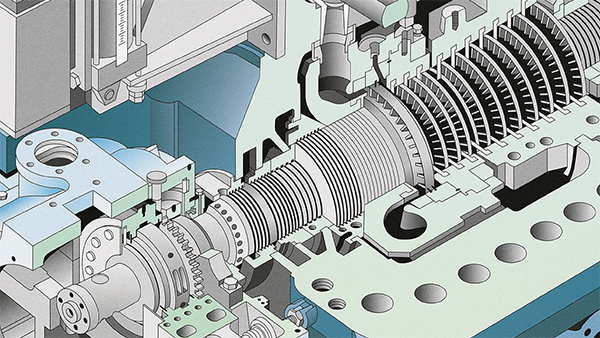Siemens Releases Latest Version of Parasolid with Convergent Modeling
The release provides new capabilities in model editing and blending, sheet modeling and imprinting, and facet modeling.

In Siemens’ latest Parasolid release, Convergent Modeling technology has been enhanced to benefit workflows that leverage both facet data and B-rep models. Image courtesy of Siemens PLM Software.
Latest News
April 23, 2019
The latest version of Parasolid software is now available from Siemens Digital Industries Software. It provides new capabilities in model editing and blending, sheet modeling and imprinting, and facet modeling. Convergent Modeling technology has been enhanced to benefit workflows that leverage both facet data and B-rep models. Parasolid also delivers support for 64-bit Android hardware to reflect interest in fully-functional, Parasolid-based applications on mobile devices. Parasolid is the geometric modelling kernel used in many CAD/CAM/CAE/AEC products including Siemens’ Solid Edge software and NX software systems.
Parasolid Version 31.1 Release Highlights
-
Android Support Added
Parasolid is built using NDK 16b and the Clang compiler and tested on Motorola Z2 phones.
- Model Editing and Blending
When patching a hole and specifying G1 continuity at the boundary, if the operation is partially successful because of the configuration, a new control makes it possible to return a body with as many G1 continuous edge as possible and a list of edges that do not meet the G1 criteria. Multiple interacting chains of apex range chamfers may now be created, removing the previous “two edges at a vertex” restriction.
- Sheet Modeling & Imprinting
When knitting bodies together, it is now possible to specify the type of the resultant body as: solid, sheet, general, or original. Perspective projection is added to enable curves to be projected onto a target from a given eye point, complementing the existing normal and vector projection techniques.
- Facet Modeling
When importing facet data, the creation of the mesh may be delayed until it is needed. Three edge blends may now be created, where one edge has a different convexity to the other two. Constant apex range chamfers may now be created on facet geometry. Notch overflow configurations are now supported for mesh blends. Meshes may now be knitted together.
More Info
Sources: Press materials received from the company and additional information gleaned from the company’s website.
More Siemens Digital Industries Software Coverage
Subscribe to our FREE magazine, FREE email newsletters or both!
Latest News
About the Author
DE’s editors contribute news and new product announcements to Digital Engineering.
Press releases may be sent to them via [email protected].






